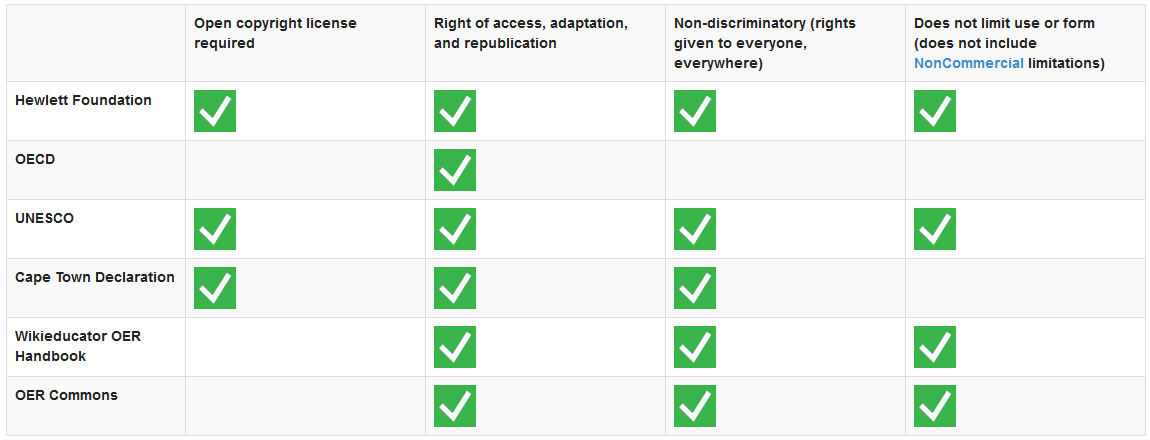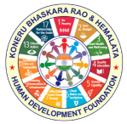3
Shannon Moist
Definition
The term OER (Open Educational Resources) was first defined by UNESCO in 2002 as “any type of educational materials that are in the public domain or introduced with an open license” and can “range from textbooks to curricula, syllabi, lecture notes, assignments, tests, projects, audio, video and animation.”
Creative Commons created the “What is OER?” table below to compare different definitions of OER from various sources.

Although many people think of OER and Open Education as generally referring to online-only material and courses, this is not the case. Many open textbooks, for example, are also available in hard copy, or can be printed if a user prefers.
The 5 Rs of Openness
As seen in the table above, OER differ from traditional educational resources in their licensing and permissions. Namely, the “open” aspect of OER can be defined by David Wiley’s 5R Framework:[1]
- Retain: the right to make, own, and control copies of the content
- Reuse: the right to use the content in a wide range of ways (e.g., in a class, in a study group, on a website, in a video)
- Revise: the right to adapt, adjust, modify, or alter the content itself (e.g., translate the content into another language)
- Remix: the right to combine the original or revised content with other open content to create something new (e.g., incorporate the content into a mashup)
- Redistribute: the right to share copies of the original content, your revisions, or your remixes with others (e.g., give a copy of the content to a friend)
The original version of this chapter contained H5P content. You may want to remove or replace this element.
OER Myth busting
Think OER are too difficult to find or complicated to use? Worried that they will take too much time and effort to implement? Concerned about copyright and intellectual property protection? The OER Policy for Europe has addressed many of these concerns on their OER Mythbusting! site.
Attributions
The “What is OER?” table at the top of this page has been copied from Creative Commons and is used under a CC BY 4.0 license.
The 5R Framework on this page was retrieved from SFU’s Open Educational Resources research guide and is used under a CC BY 4.0 license.
- This material was created by David Wiley and published freely under a Creative Commons Attribution 4.0 license at: http://opencontent.org/blog/archives/3221 ↵

